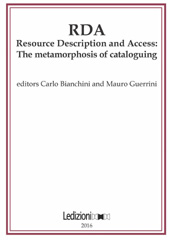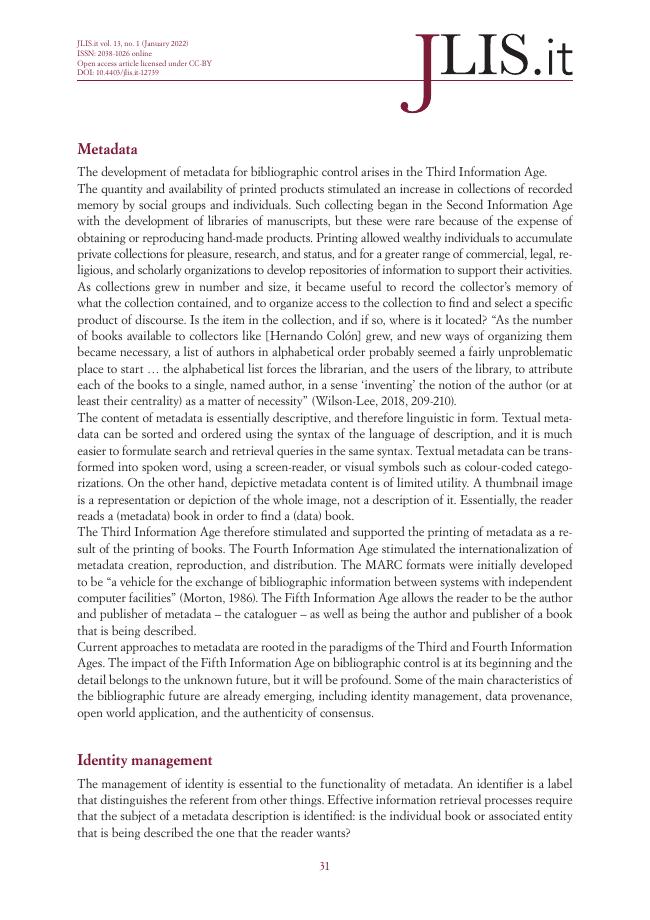Bibliographic control in the fifth information age.
25-36 p.
Bibliographic control is concerned with the description of persistent products of human discourse across all sensory modes. The history of recorded information is punctuated by technological inventions that have had an immediate and profound effect on human society. These inventions delimit five 'information ages'. It is now the Fifth Information Age, characterized by the ubiquitous use of powerful portable information processing devices for peer to peer communication across the entire planet. All such discourse is recorded during transmission and is copied to persistent storage media. In the Fifth Information Age, the end-user is immersed in and interacts with a global ocean of recorded information. The interaction is continuous and ubiquitous, and never passive.
Every interaction increases the volume of data; all aspects are recorded, including the time, place, and nature of the interaction, and details of the 'reader' and their 'book'. The roles of cave 'artist', scribe, printer, publisher, encoder, broadcaster, librarian, and other mediators are no longer differentiated from 'author'. The distinction between data and metadata is completely blurred: data becomes metadata as soon as an information resource is named by its creator. The challenge for bibliographic control is the reconciliation of globalization and personalization via localization. The bibliographic ecosystem is very different and the activities and imploded roles of the end-user must be taken into account by professional agents. [Publisher's text].
-
Articles from the same issue (available individually)
-
Information
ISSN: 2038-1026
KEYWORDS
- Bibliographic control, Semantic Web, Metadata



